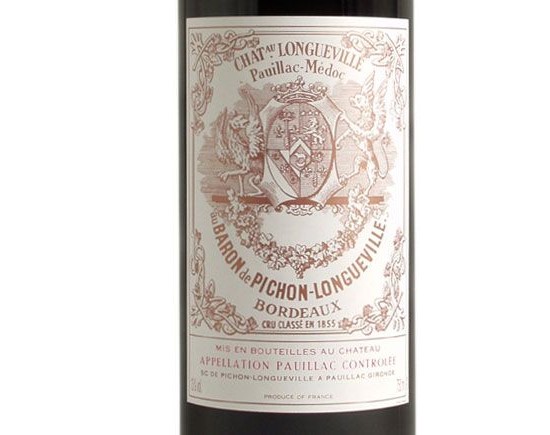

At first, Baron Raoul ran both sides, but eventually (around 10 years later) they split and became the two separate estates that they are today. The three daughters got the land that would become Pichon Comtesse, and the sons took Pichon Baron. We’ve already mentioned Baron Joseph de Pichon-Longueville, who ran the estate for 71 years until 1850, and it was on his death that the property was divided between his five children. His father in law had some vines in Saint Lambert in southern Pauillac, so beginning the Pichon Longueville estate – but it was Jacques de Pichon who began building this up. In the mid 17th century, Jacques de Pichon, Baron de Longueville, married Therese des Mesures de Rauzan, whose father Pierre Rauzan was a landowner in Margaux. Second wine: Les Tourelles de Longueville (distributed exclusively by COFCO in China) Major markets France, USA, Japan, Korea, China.

Other chateaux owned: Chateau Pibran, Chateau Petit Village, Chateau Suduiraut (all in the Bordeaux region), Domaine de l’Arlot (Burgundy), Quinta do Noval (Portugal), Disznoko (Hungary), Mas Belles Eaux (Languedoc) – 525 hectares of vines in total.Ĭommercial strategy:Négociants sell 100% of production, and 85% is exported. He lived through three revolutions, the reign of five kings, two republics and an empire – and managed to build up an estate so successful that five years after his death it was named 2nd growth in the 1855 Classification.
#Chateau pichon longville full
It has to be Baron Joseph de Longueville, who took over running the property at 19 years old and was at the helm until his death in 1850, aged 90, a full 71 years later. Most notable previous owner: This is an easy choice. Some of these ended up in Château Pichon-Longueville, and today you can see traces of war-time graffiti on some of the stone walls inside the chateau building.Ĭurrent owner: French insurance company AXA Millésimes To avoid the danger zone, many Pauillac residents who lived around the port moved further away from the river. Towards the end of the Second World War, part of the German fleet moored in the port of Pauillac and was the target of Allied bombing. The Pichon-Longueville family survived the 1789 French Revolution by then-owner Joseph renouncing his title and becoming a simple ‘farmer’ in Pauillac (although he did spend several weeks in prison for his dubious political leanings). Pichon Baron receives around 10,000 visitors per year, and is one of the few Médoc estates to be open to visitors every day of the week, including weekends. In 2001 he took over as managing director of the group, based out of Bordeaux. His father James Seely was a well-respected wine writer, and Christian got his start in the industry by helping to research his father’s book Great Bordeaux Wines before being hired, in 1993, to restore the fortunes of AXA’s Douro Valley port house, Quinta do Noval. English director Christian Seely read English at Trinity College, Cambridge.

Architect Alain Triaud ensured that the reflective pond was first taken out, a subterranean cellar built underneath, and then the pond put back, as beautiful as before. So when architects were called in to redo the cellars, there was uproar in case anything was altered – most specifically the ornamental pond in front of the chateau, whose waters reflect the spires. The neo-classical 19th century spires of Chateau Pichon Baron (we’ll call it Pichon Baron, as it is popularly know, although officially they prefer Pichon Longueville) were based on the chateaux of the Loire, and are easily one of the most photographed sights in the Médoc. Production: 73ha, with 40ha going into the first wine, from the original terroir of the property, on the plateau overlooking Latour.įive things you didn't know about Chateau Pichon Longueville: Image courtesy of Chateau Longueville au Baron de Pichon-Longueville Location: AOC Pauillac, opposite Chateau Pichon Comtesse, and Chateau Latour. Chateau Longueville au Baron de Pichon-Longueville


 0 kommentar(er)
0 kommentar(er)
